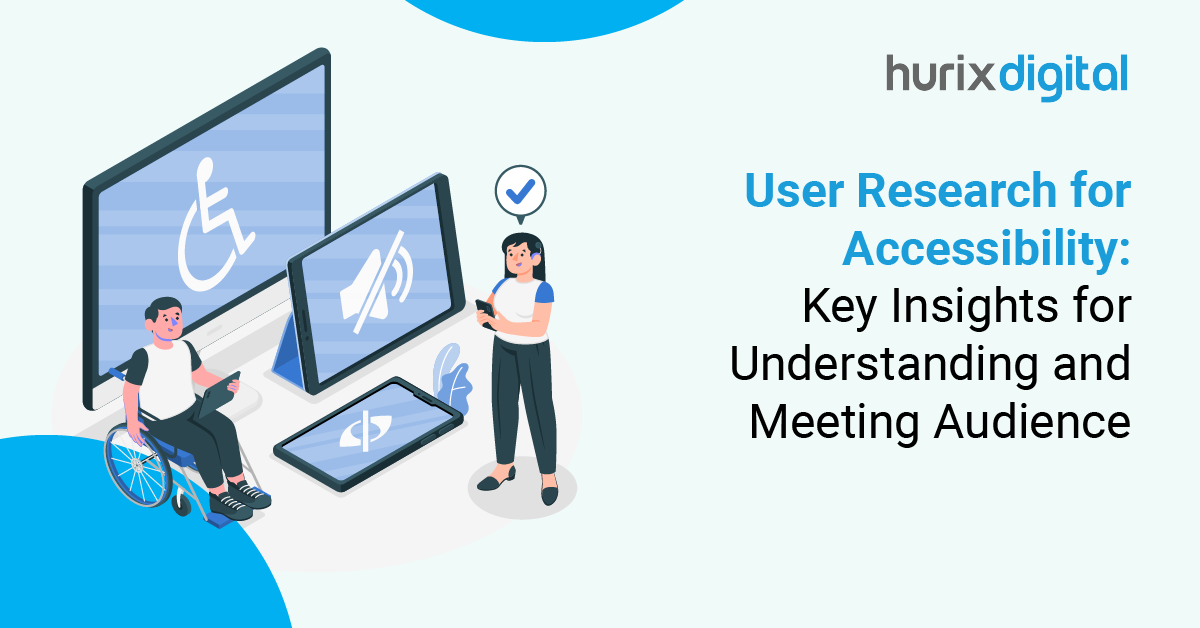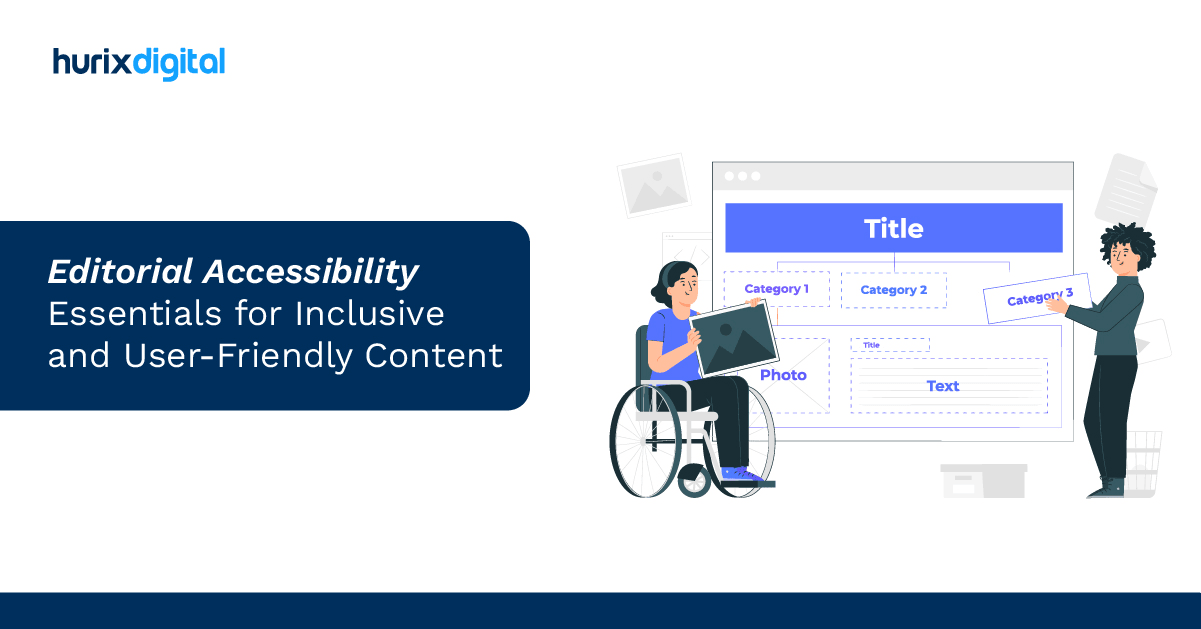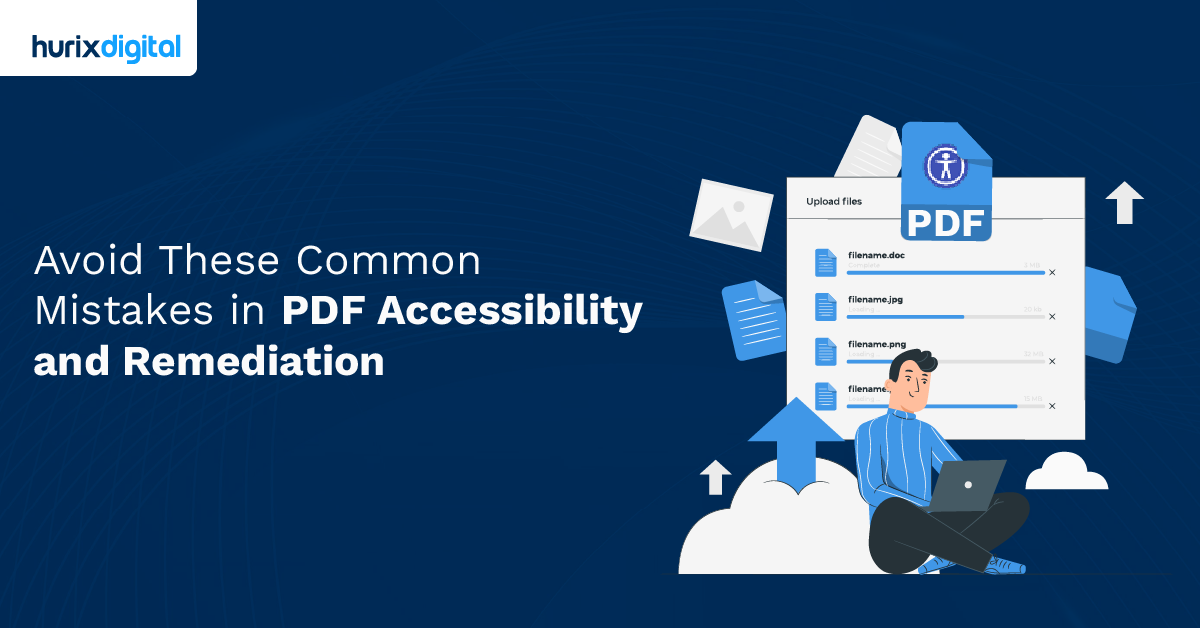
User Research for Accessibility: Key Insights for Understanding and Meeting Audience Needs
Summarize with:
In today’s world, ensuring digital accessibility is no longer an option—it’s a compulsion for every online business. But how many of them succeed in achieving this feat?
Well, according to a survey conducted in 2023, about 83.6% of website home pages had low-contrast text issues. Furthermore, 22.1% of images had no alternative texts. These numbers reflect the poor scenario of digital accessibility prioritization for diverse users.
But if you take a closer look, they also show how businesses and institutions fail to comprehend what the user indeed wants for a truly accessible, inclusive online experience.
Read on as we talk about the importance of user research in understanding audiences’ accessibility needs and also list the ways you can reap its benefits. Let’s start!
Table of Contents:
- How Does User Research Ensure Maximum Digital Accessibility?
- Steps to Conduct User Research for Digital Accessibility
- Best Practices for Understanding Audience Needs for Digital Accessibility
- Wrapping Up
How Does User Research Ensure Maximum Digital Accessibility?
Users stand at the center of digital accessibility. In simpler words, they’re the force that propels one to make their website accessible. Therefore, understanding what they want is important.
Apart from this, here are some other reasons why user research is essential for maximizing digital accessibility:
1. Helps Identify Diverse User Wants
To increase your website’s reach and visibility, you must target diverse audience segments. However, if diverse accessibility functionalities do not accompany this broader targeting, you will fail to garner conversions despite your amplified reach. Thus, the only viable solution is user research. This will help you get an idea of your audience’s diversity and make changes that are comprehensive and inclusive.
2. Tests for Maximum Usability
When you research your users’ needs, you can identify barriers and loopholes that may hinder their maximum website accessibility. This can further enable you to make iterations early on and create a user-centered design that is precisely tailored to their needs and usability requirements.
3. Enforces Improvements
User research helps you gain insights into data and figures that can foster improvements beyond website accessibility. For instance, they can allow you to understand what kind of content your audience likes, what enhancements they are looking for in a product, and so on. In a nutshell, it can help you improve not only your website but also your business.
Also Read: Best Practices to Ensure Accessibility on Social Media Platforms
Steps to Conduct User Research for Digital Accessibility
Here is how you can conduct user research to maximize digital accessibility for your audience:
1. Define Your Objectives
Firstly, highlight the objective of your research. It could be identifying your website’s accessibility requirements, understanding the accessibility quality of a particular product, or testing how your current accessibility design is performing among your audience. Specifying your research goals helps create a targeted and methodical research framework.
2. Study Participants
Once you have set your research objective, gather a group of volunteers with disabilities. This should include individuals with visual, auditory, sensory, motor, or any other form of incapability.
Additionally, make sure the group of research volunteers is also versatile in terms of age, gender, race, region, etc. This will help you yield comprehensive research results.
3. Pick Your Research Method
Now, based on the objective specified earlier, pick a research method that aligns with it. For instance, suppose you want to understand the accessibility challenges associated with your website.
Interviewing each volunteer can help you gain insights into this. Apart from this, other research methodologies you can go for are surveys, usability testing, persona derivation, etc.
4. Create Accessible Materials
This is an additional yet very crucial tip. For best research efficiency, make sure all your research materials—interview scripts, survey forms, product prototypes, etc.—are on par with accessibility guidelines. This will maximize the efficiency of the research and reduce the chances of errors.
5. Conduct the Research
Finally, it’s time to conduct the research. To yield the most authentic, accurate results, ensure that your research environment is bias-free and relaxed.
Be patient and empathetic with all your participants. Provide enough time and resources for them to comfortably conduct the research.
6. Implement Your Findings
Once the research period is over, gather and analyze all its findings. Interpret any accessibility patterns, loopholes, or challenges you can identify in the results.
Use qualitative (interview transcripts) and quantitative (survey responses) data to derive a comprehensive understanding of your users’ accessibility needs and synthesize them to form actionable tips and implement them.
Best Practices for Understanding Audience Needs for Digital Accessibility
Here are some best practices that you can follow to conduct user research and understand audience needs more efficiently:
1. Follow the Accessibility Standards
Throughout the research period, make sure you comply with all the major web accessibility standards and guidelines, such as WCAG (Web Content Accessibility Guidelines), ARIA (Accessible Rich Internet Applications), and so on. This not only boosts research efficiency but also helps derive accurate results.
2. Be Inclusive
When comprehending audience needs, try to be as inclusive and welcoming as possible. Do not isolate a particular audience segment’s needs when assessing research results. Take every group’s opinions into consideration when creating a website design that’s maximally accessible.
3. Follow a User-Centered Approach
While conducting the research and interpreting its results to understand audience needs, try to follow a user-centered approach. Be empathetic to their requirements and introduce changes that are precisely tailored to them.
Check Out EXCLUSIVE: Hurix Digital Makes an eCommerce Platform Catering to Millions Worldwide of Users Improve Accessibility Standards
Wrapping Up
Digital accessibility is becoming more and more mainstream in today’s world. Any business or institution that fails to ensure the same for its audience faces many repercussions, both minor and major.
Having said that, if you are looking for help, reach out to us at Hurix Digital. With our comprehensive, innovative suite of Accessibility Solutions, you can develop a digitally accessible website in no time.
Hurry up — get in touch today!
Summarize with:

Vice President – Content Transformation at HurixDigital, based in Chennai. With nearly 20 years in digital content, he leads large-scale transformation and accessibility initiatives. A frequent presenter (e.g., London Book Fair 2025), Gokulnath drives AI-powered publishing solutions and inclusive content strategies for global clients
 Upcoming Masterclass | Build an Army of Brand Evangelists using Training & Development | November 20th, 8:30 AM PDT | 11:30 AM EDT | 10:00 PM IST
Upcoming Masterclass | Build an Army of Brand Evangelists using Training & Development | November 20th, 8:30 AM PDT | 11:30 AM EDT | 10:00 PM IST




